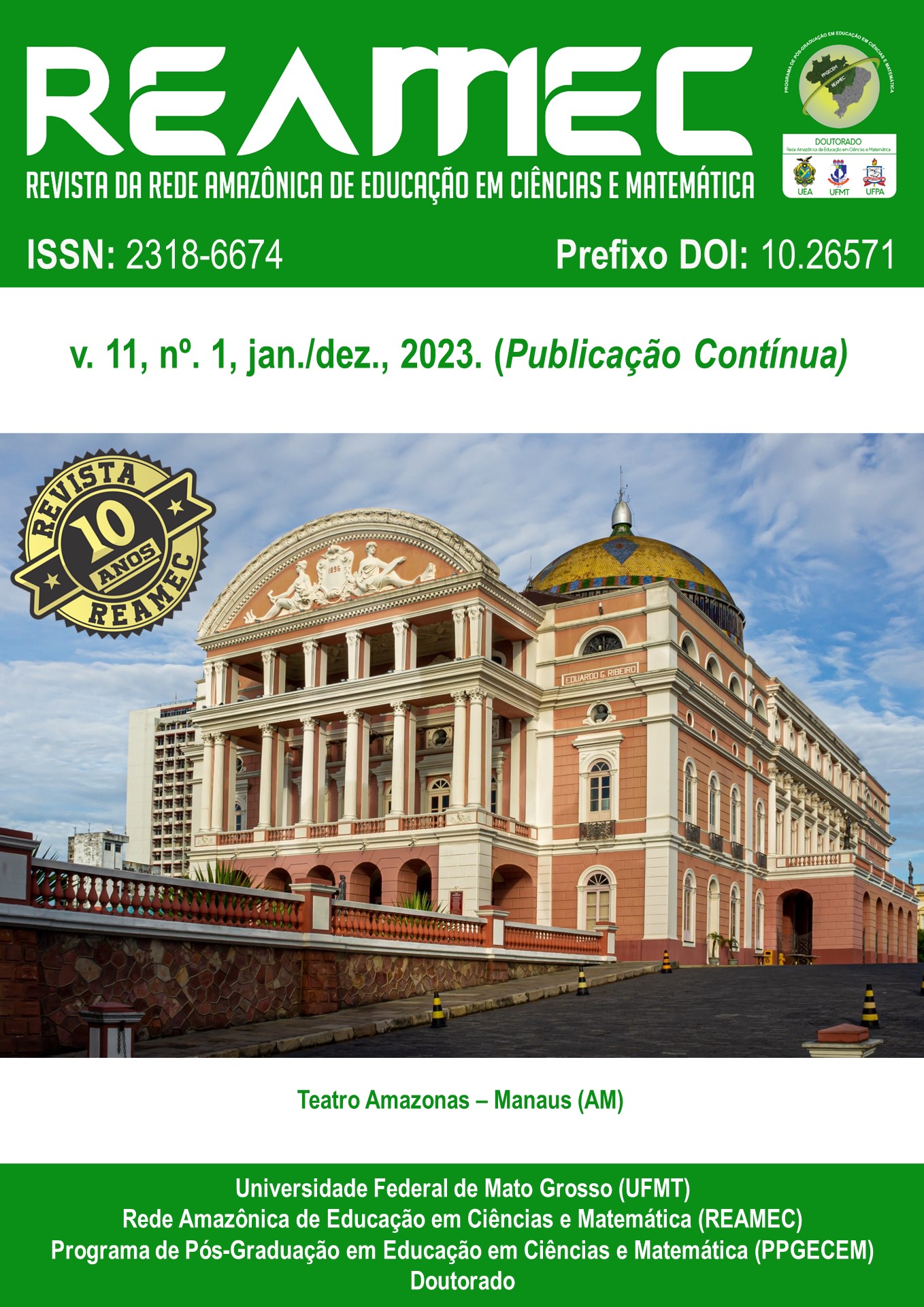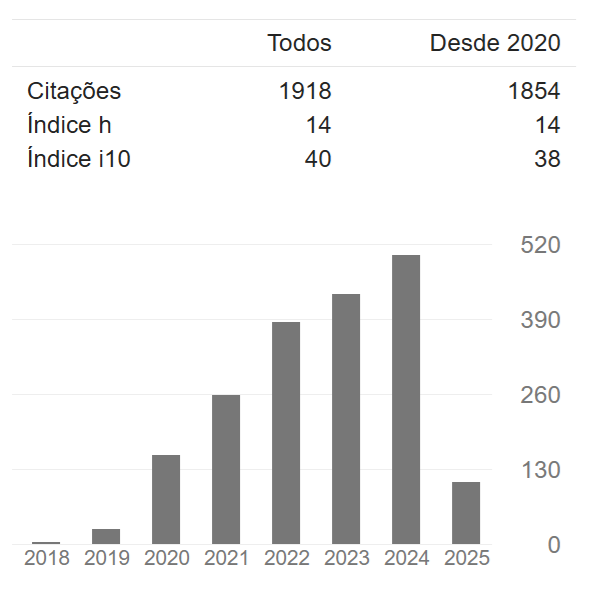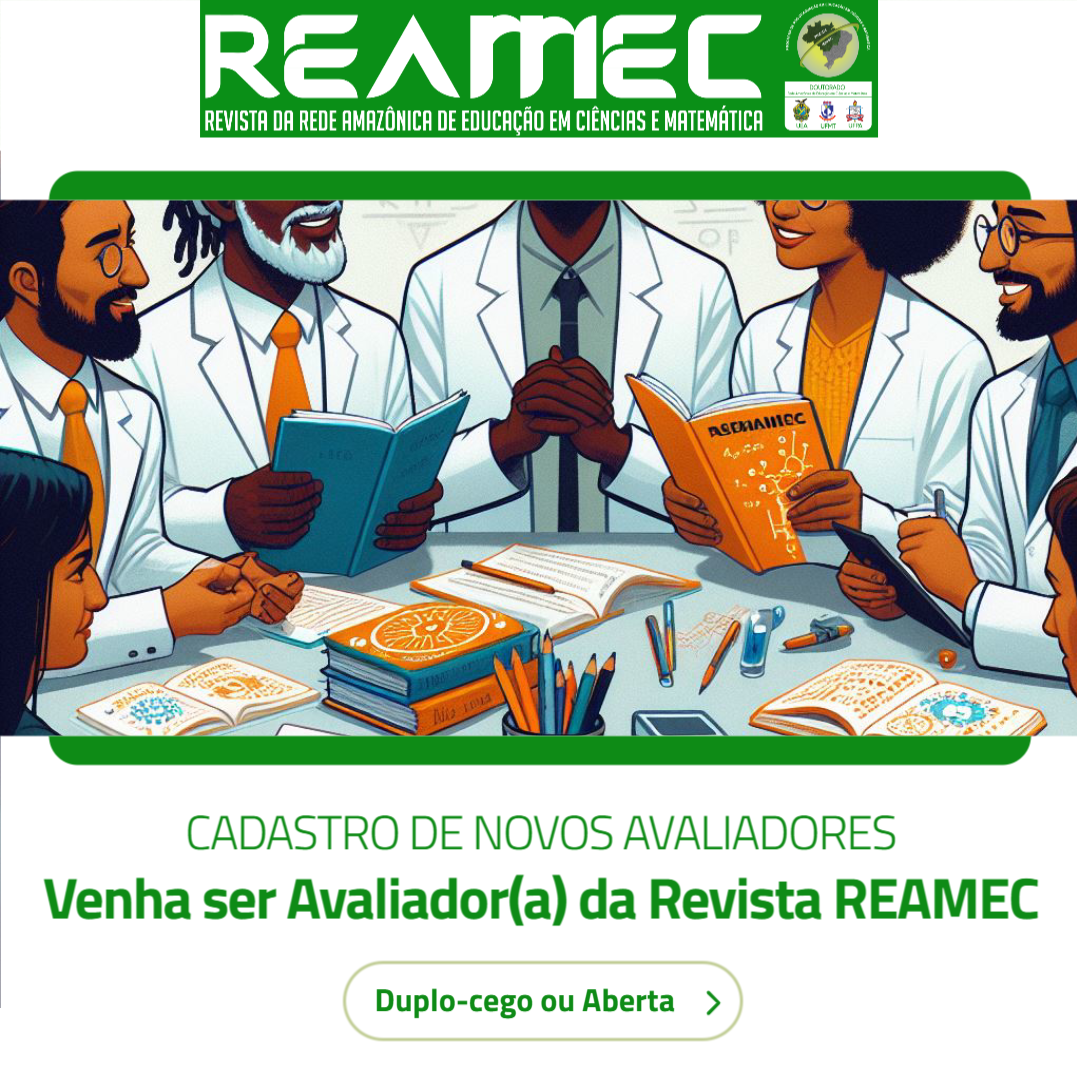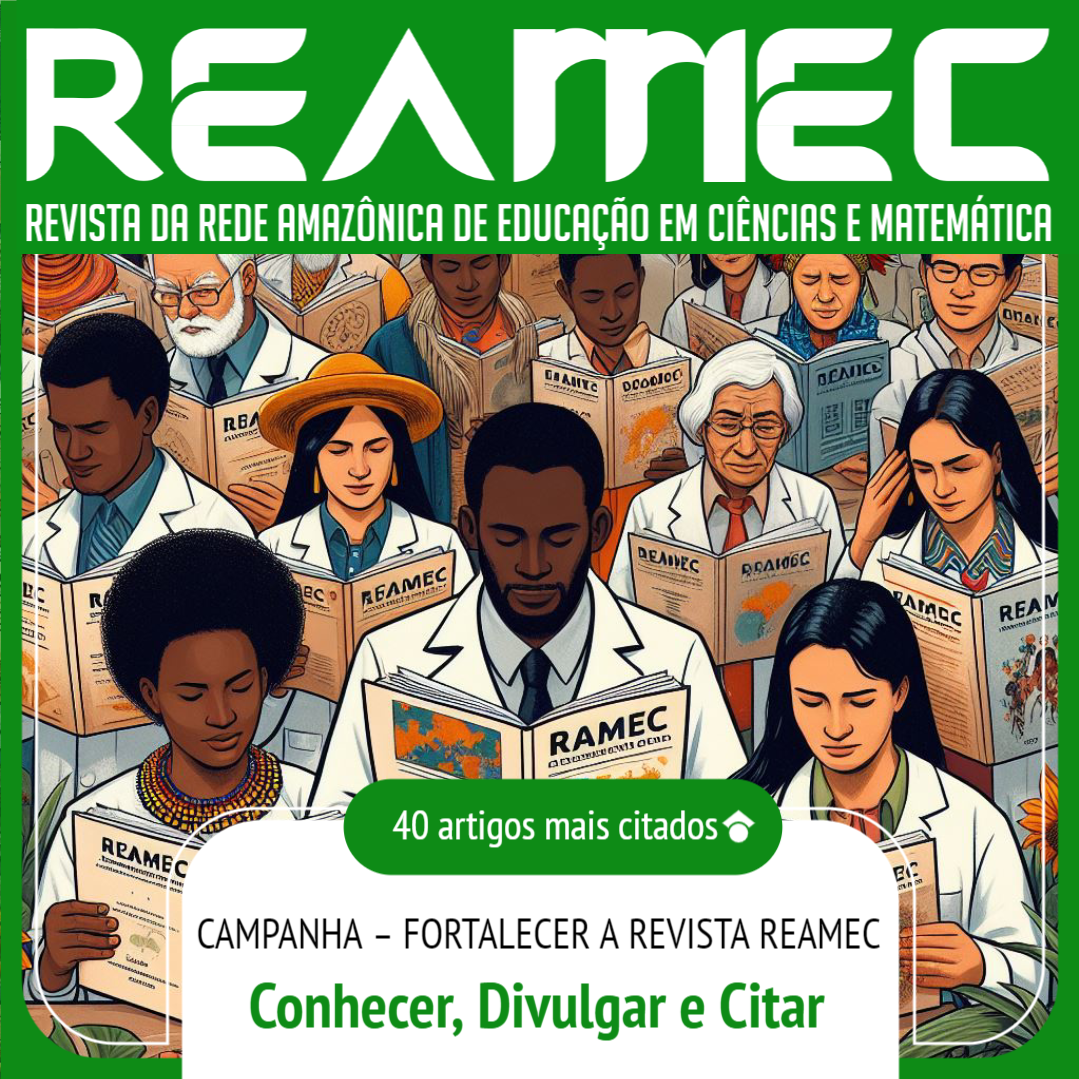DESENHO DE TAREFAS COM REALIDADE AUMENTADA EM GEOMETRIA: ALGUMAS CONSIDERAÇÕES
DOI:
https://doi.org/10.26571/reamec.v11i1.16865Palavras-chave:
Desenho de tarefas, Realidade aumentada, GeoGebra, Geometria dinâmicaResumo
A Realidade Aumentada é uma tecnologia que tem ganhado destaque em diversos domínios do conhecimento pela forma como incorpora elementos virtuais no mundo real. No campo educacional, os benefícios dessa tecnologia têm sido reconhecidos, dada a possibilidade de acessar e manipular representações que em outros ambientes não seriam possíveis. O ensino e aprendizagem da geometria também tem se beneficiado da Realidade Aumentada graças à representação de objetos geométricos tridimensionais no mundo real, somada à possibilidade de manipulá-los da mesma forma que ocorre nos programas de geometria dinâmica. No entanto, não houve progresso de pesquisa suficiente sobre como essa tecnologia poderia ser incorporada nesta área da matemática. Apoiado por alguns exemplos de tarefas com realidade aumentada, apresentamos algumas considerações para o design de tarefas definidas nesta tecnologia, que têm como objetivo oferecer elementos para o uso adequado dessa tecnologia e de suas características.
Downloads
Referências
AZUMA, R. T. A survey of augmented reality. Presence: Teleoperators and Virtual Environments, v. 6, n. 4, p. 355-385, 1997. Disponible en: https://www.cs.unc.edu/~azuma/ARpresence.pdf
DRIJVERS, P., KIERAN, C., MARIOTTI, M. A., AINLEY, J., ANDRESEN, M., CHAN, Y. C., DANA-PICARD, T., GUEUDET, G., KIDRON, I., LEUNG, A., Y MEAGHER, M. (2009). Integrating technology into mathematics education: theoretical perspectives. In C. Hoyles y J. Lagrange (Eds.), Mathematics education and technology-rethinking the terrain (pp. 89-132). Boston, MA: Springer, 2009. https://doi.org/10.1007/978-1-4419-0146-0_7
GUTIÉRREZ, A.; JAIME, A. Análisis del aprendizaje de geometría espacial en un entorno de geometría dinámica 3-dimensional. PNA, v.9, n.2, p. 53-83, 2015. https://doi.org/10.30827/pna.v9i2.6106
HEALY, L. Identifying and explaining geometrical relationship: Interactions with robust and soft Cabri constructions. In NAKAHARA, T., KOYAMA, M. (Cord.), Proceedings of the 24th PME International Conference, 2000.
HOLLEBRANDS, K.; LEE, H. Characterizing questions and their focus when pre-service teachers implement dynamic geometry tasks. Journal of Mathematical Behavior, v.43, p. 148-164, (016. https://doi.org/10.1016/j.jmathb.2016.07.004
KAUFMANN, H. Construct3D: an augmented reality application for mathematics and geometry education. Proceedings of the ACM Multimedia Conference 2002, p. 656-657, 2022.
KOMATSU, K.; JONES, K. Task design principles for heuristic refutation in dynamic geometry environments. International Journal of Science and Mathematics Education, v.17, n.4, p. 801-824, 2019. https://doi.org/10.1007/s10763-018-9892-0
LABORDE, C. Integration of technology in the design of geometry tasks with cabri-geometry. International Journal of Computers for Mathematical Learning, v.6, p. 283-317, 2001. https://doi.org/10.1023/A:1013309728825
LAVICZA, Z., HAAS, B., KREIS, Y. Discovering everyday mathematical situations outside the classroom with MathCityMap and GeoGebra 3D. In M. LUDWIG, S. JABLONSKI, A. CALDEIRA, Y A. MOURA (Eds.), Research on Outdoor STEM Education in the Digital Age. Proceedings of the ROSETA Online Conference. Münster, Alemania: WTM, 2020. https://doi.org/https://doi.org/10.37626/GA9783959871440.0
LEUNG, A. An epistemic model of task design in dynamic geometry environment. ZDM - Mathematics Education, v.43, n. 3, p. 325-336, 2011. https://doi.org/10.1007/s11858-011-0329-2
SINCLAIR, N., BARTOLINI-BUSSI, M. G., DE VILLIERS, M., JONES, K., KORTENKAMP, U., LEUNG, A., OWENS, K. Recent research on geometry education: an ICME-13 survey team report. ZDM - Mathematics Education, v. 48, n. 5, p. 691-719, 2016. https://doi.org/10.1007/s11858-016-0796-6
SINCLAIR, N., YERUSHALMY, M. Digital technology in Mathematics teaching and learning: a decade focused on theorising and teaching. En A. GUTIÉRREZ, G. LEDER, & P. BOERO (Eds.), The Second Handbook of Research on the Psychology of Mathematics Education, (pp. 235-274), 2016. Sense Publishers.
SUA, C., GUTIÉRREZ, A., JAIME, A. Análisis de una actividad de visualización en un entorno de geometría dinámica 3d y realidad aumentada: alineando puntos en el espacio. Investigación en Educación Matemática XXIV. 2021.
SWIDAN, O., SCHACHT, F., SABENA, C., FRIED, M., EL-SANA, J., Y ARZARELLO, F. Engaging students in covariational reasoning within an augmented reality environment. In T. PRODROMOU (Ed.), Augmented reality in educational settings (pp. 147-167). Holanda: Brill, 2019. https://doi.org/https://doi.org/10.1163/9789004408845_007
TOMASCHKO, M., Y HOHENWARTER, M. Augmented reality in mathematics education: the case of GeoGebra AR. In T. PRODROMOU (Ed.), Augmented reality in educational settings (pp. 325-346). Holanda: Brill, 2019. https://doi.org/https://doi.org/10.1163/9789004408845_014
TROCKI, A. Evaluating and writing dynamic geometry tasks. The Mathematics Teacher, v.107, n. 9, p. 701-705, 2014. https://doi.org/https://doi.org/10.5951/mathteacher.107.9.0701
TROCKI, A., Y HOLLEBRANDS, K. The development of a framework for assessing dynamic geometry task quality. Digital Experiences in Mathematics Education, v. 4, n. 2-3, p. 110-138, 2018. https://doi.org/10.1007/s40751-018-0041-8
TROUCHE, L. From artifact to instrument: mathematics teaching mediated by symbolic calculators. Interacting with Computers, v. 15, n. 6, p. 783-800, 2003. https://doi.org/https://doi.org/10.1016/j.intcom.2003.09.004
WU, H., LEE, S. W., CHANG, H., Y LIANG, J. Current status, opportunities and challenges of augmented reality in education. Computers & Education, v. 62, p. 41-49, 2013. https://doi.org/10.1016/j.compedu.2012.10.024
YUEN, S. C.-Y., YAOYUNEYONG, G., Y JOHNSON, E. (2011). Augmented reality: an overview and five directions for AR in education. Journal of Educational Technology Development and Exchange, v. 4, n. 1, p. 119-140, 2011. https://doi.org/10.18785/jetde.0401.10
Downloads
Publicado
Edição
Seção
Como Citar
Licença
Copyright (c) 2023 Camilo Sua, Angel Gutiérrez

Este trabalho está licenciado sob uma licença Creative Commons Attribution-NonCommercial 4.0 International License.
Política de Direitos autorais
Os autores mantêm os direitos autorais de seus trabalhos publicados na Revista REAMEC, atendendo às exigências da Lei nº 9.610, de 19 de fevereiro de 1998, que altera, atualiza e consolida a legislação sobre direitos autorais e dá outras providências, enquanto a revista utiliza um modelo de licenciamento que favorece a disseminação do trabalho, particularmente adotando a Licença Creative Commons Attribution-NonCommercial 4.0 International (CC BY-NC 4.0).
Os direitos autorais são mantidos pelos autores, os quais concedem à Revista REAMEC os direitos exclusivos de primeira publicação. Os autores não serão remunerados pela publicação de trabalhos neste periódico. Os autores têm autorização para assumir contratos adicionais separadamente, para distribuição não exclusiva da versão do trabalho publicado neste periódico (ex.: publicar em repositório institucional, em website pessoal, publicar uma tradução, ou como capítulo de livro), com reconhecimento de autoria e publicação inicial neste periódico. Os editores da Revista têm o direito de realizar ajustes textuais e de adequação às normas da publicação.
Política de Acesso Aberto/Livre
Os manuscritos publicados na Revista REAMEC são acessíveis gratuitamente sob o modelo de Acesso Aberto, sem cobrança de taxas de submissão ou processamento de artigos dos autores (Article Processing Charges – APCs). A Revista utiliza Licença Creative Commons Attribution-NonCommercial 4.0 International (CC BY-NC 4.0) para assegurar ampla disseminação e reutilização do conteúdo.
Política de licenciamento - licença de uso
A Revista REAMEC utiliza a Licença Creative Commons Attribution-NonCommercial 4.0 International (CC BY-NC 4.0). Esta licença permite compartilhar, copiar, redistribuir o manuscrito em qualquer meio ou formato. Além disso, permite adaptar, remixar, transformar e construir sobre o material, desde que seja atribuído o devido crédito de autoria e publicação inicial neste periódico.























































































